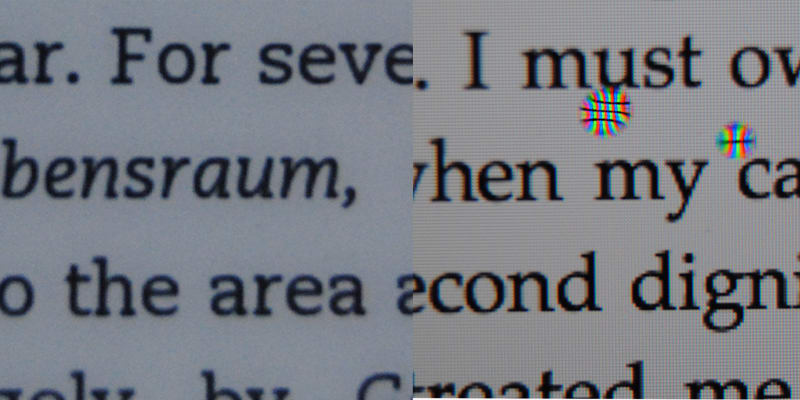E-Ink Vs. LCD
What is the difference between the eInk screen of the Kindle and the LCD screen of the iPad?
 Credit:
Credit:
Recommendations are independently chosen by Reviewed's editors. Purchases made through the links below may earn us and our publishing partners a commission.
Most people are familiar with LCD technology at this point, since everything—including refrigerators—is equipped with the display technology. E-Ink is a little bit newer, however, and is an evolving technology with its own benefits.
First of all, the two different screens are operating very differently. Below are some close-ups of the Amazon Kindle—which uses an E-Ink screen— and the Apple iPad—an LCD screen.
A big point of contention: eyestrain. The big buzz surrounding E-Ink is that the matte, non-backlit screen won’t cause as much eyestrain as an LCD. Despite the blustering on both sides, the issue of eyestrain seems to be a personal preference issue.
One thing to consider, though, is the effect of external light on the screen. One thing we test is the effect of external light on the screens. Below you can see the effects the light has both the first-generation iPad (an LCD display) and the third-generation Kindle (E-Ink display).
As you can see, the iPad’s screen doesn’t hold up under bright light as well as the Kindle’s matte E-Ink screen.

